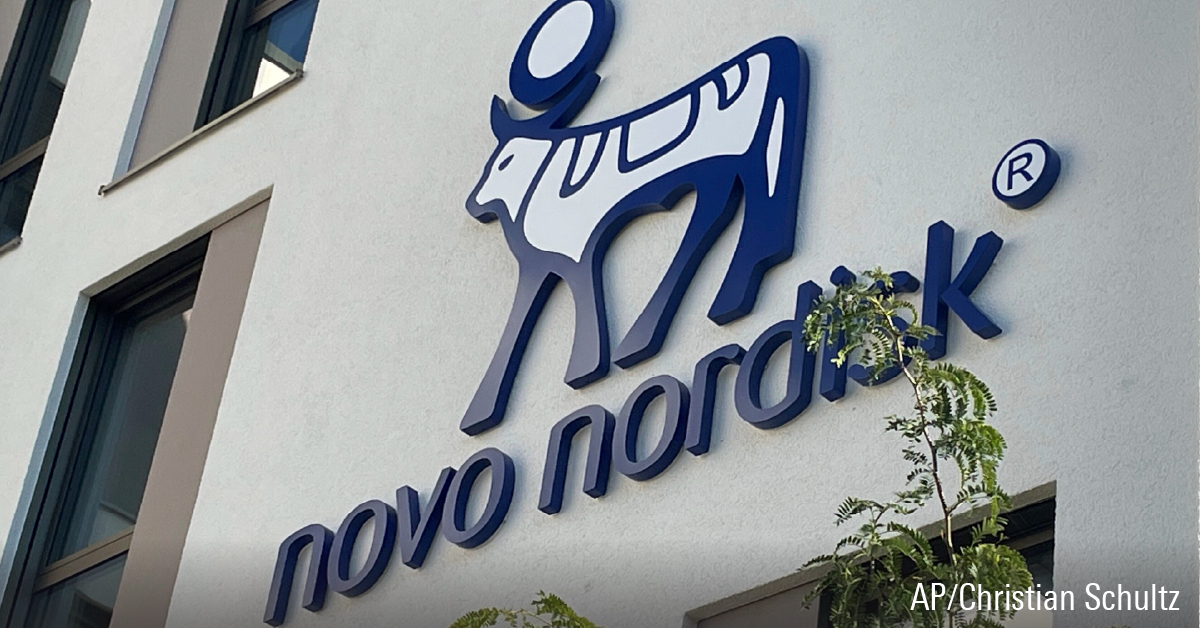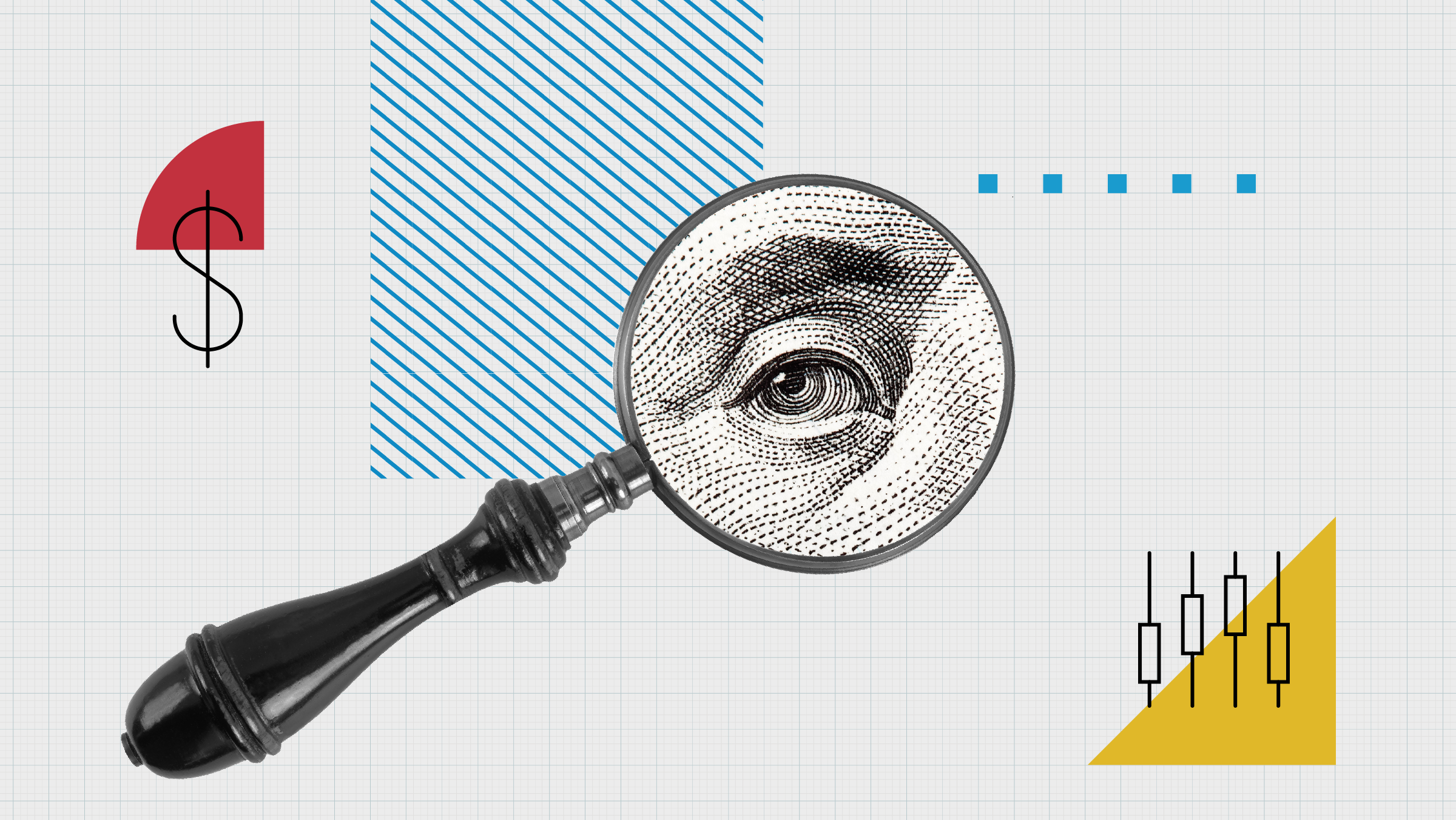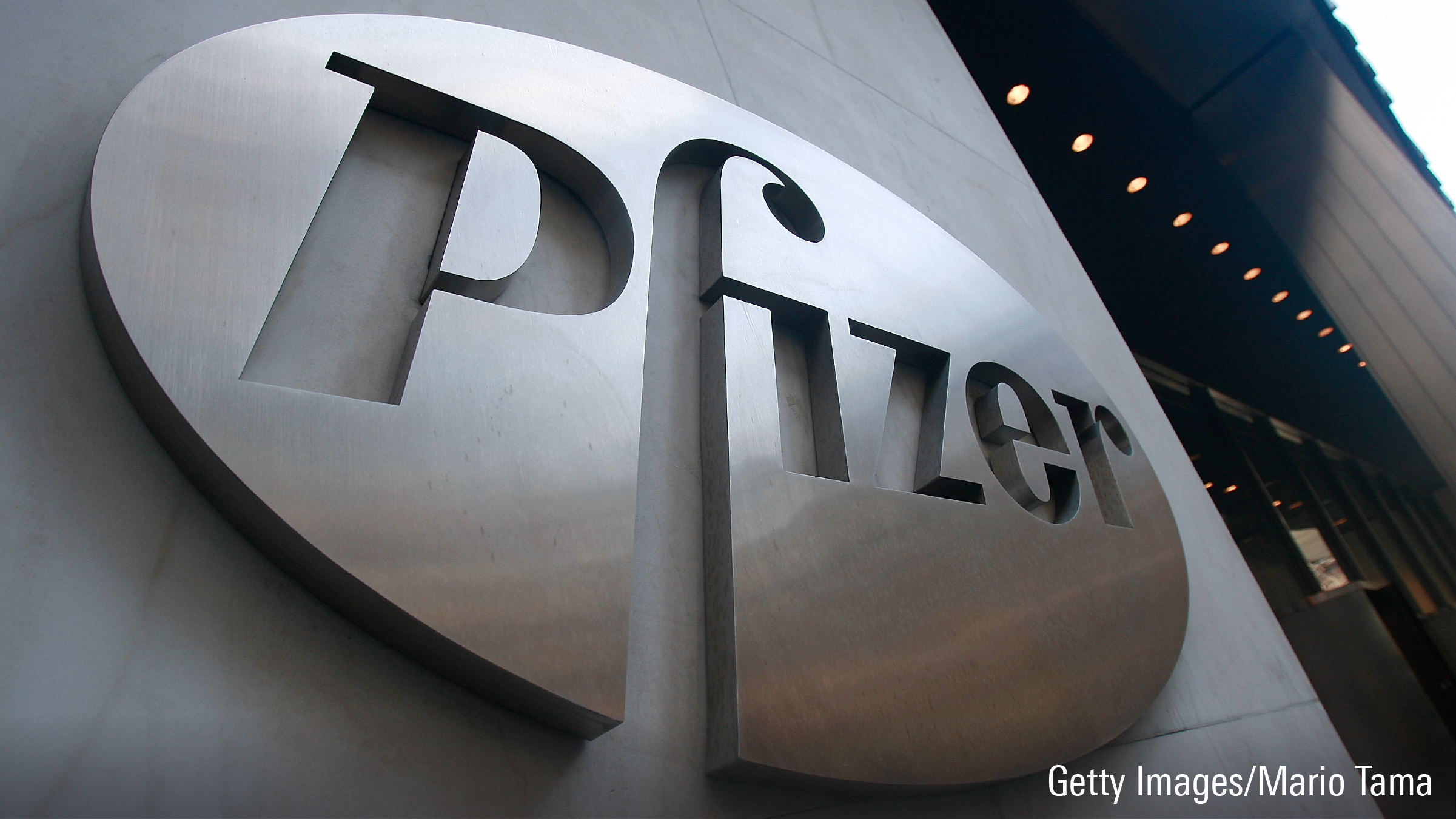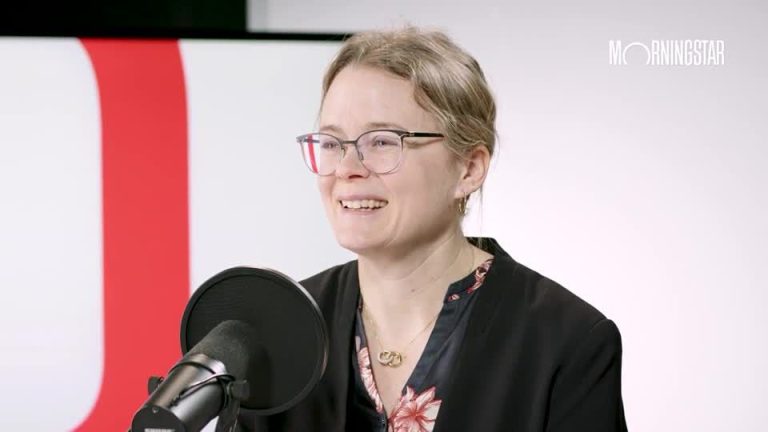Sarah Hansen: Welcome to Investing Insights. I’m your host, Sarah Hansen, and I’m filling in for Ivanna Hampton today.
As many investors might know, we’re in the middle of a pretty dramatic rotation in the stock market. The Big Tech companies that drove the market higher for the better part of two years are struggling, and other sectors are pulling ahead.
Healthcare stocks are one of those rotation stories: After lagging the market by a pretty wide margin in 2024, healthcare is the best-performing sector so far this year—that’s as of Wednesday, March 19. The “healthcare” umbrella covers a wide range of stocks, from drugmakers like Eli Lilly LLY and Johnson & Johnson JNJ to insurers like UnitedHealth to research and biotechnology firms like Thermo Fisher TMO and Vertex VRTX.
We have Karen Andersen, Morningstar’s director of healthcare equity research, here to help us make sense of the forces that are shaping the healthcare landscape—like those popular GLP-1 drugs—and what they mean for investors.
So, Karen, thank you so much for being here.
Karen Andersen: Yeah, great to be here. Thanks.
Why Healthcare Stocks Have Been Resilient During the Market Downturn
Hansen: And I’m excited to talk healthcare stocks. So one of the first things I noticed this year was that when the whole market was falling a couple of weeks ago, healthcare stocks were one of the only sectors that held on. And as of today, which is Wednesday, March 19, they’re still the best-performing sector so far this year at a time when a lot of other categories have really underperformed. So what’s going on? Why have they been so resilient?
Andersen: Part of it, I think, is coming off of a really rough December. Healthcare stocks had a really hard time. There was a lot of fear about regulatory and policy changes under the new Trump administration. So part of it is kind of a rebound, I think, from that.
But honestly—I’m looking at the stocks I cover—so biopharma is actually about half of the US market cap in healthcare. And a lot of the names I cover just had very strong fourth-quarter results, very strong outlook for 2025. I think a lot of good solid responses to those published earnings.
And then also, I think we’re at a time where there’s a lot of uncertainty about whether there could be a recession. And healthcare, it’s always a defensive area because we continue to need care regardless of what the economy is doing. So I think it’s a few things working together to create that momentum.
A Stock Market Rotation Is Underway. Will It Last?
How Regulatory Changes Could Affect the Healthcare Industry
Hansen: Makes sense. So it sounds like tailwinds from good performance last year, maybe more certainty on the regulatory side. Is that a stretch?
Andersen: I think that is still, I think, lingering a little bit in the background. I mean, I think to me it falls into two categories. There are the more likely risks, things like delays that the FDA with new approvals for new drugs or new devices. There probably are going to be some cuts to some government programs. Maybe there might be some cuts to Medicaid that could create some additional pressure, especially for some of the healthcare plan companies.
Those are things that we feel comfortable with. We feel like we’ve factored those into our Uncertainty Ratings and the margin of safety around our star ratings. But then there’s always the kind of wild card risk of there could be more policy pressure, there could be new policies to bring drug prices down to international price levels, which is something we think there’s less than a 10% chance that that could actually happen, that that could actually get through Congress and get passed. But it’s still an uncertainty that’s in the market and I think affecting stocks.
Hansen: I know we’re going to talk about that later. I preempted you. But on the whole, it sounds like the defensive theme is pretty strong, too, for healthcare.
Andersen: I think so, too. I think that is starting to come out a little.
Healthcare: Sector Looks Undervalued with Pullback After US Election and Obesity Data
CVS Health and Moderna are some of our favorite stocks in this sector.

An Investor’s Guide to the Next Trump Administration
We anticipate big changes in these five policy areas.

Why Healthcare Stocks’ Valuations Look Attractive From a Bottom-Up View
Hansen: Let’s talk about valuations because that’s Morningstar’s bread and butter. Our analysts, and in this big report that you just released, you said that the valuations look attractive from the bottom up when you look at healthcare but less so from the top down. And that’s a very interesting dynamic, I think, and I’d love if you can walk us through what it means.
Andersen: As a stock analyst, the way that I’m looking at healthcare is definitely from more of a bottom-up view. We are taking all the little pieces, looking at the individual companies, and valuing those based on what kind of cash we think they can generate in the future. And then we come up with an overall healthcare view based on that. So that’s the bottom-up view. And from that perspective, we think shares look slightly undervalued, so—attractive.
The top-down view, there’s another group at Morningstar, the multi-asset research group. What they do is they’re taking more of a view of the overall healthcare industry, and they look at things like historical valuation multiples, and they come up with a view of whether shares should be trading at a lower or higher multiple. So they think shares in the future will be trading at a lower multiple, so they look slightly overvalued. But overall, it is close to a neutral view, I’d say overall.
How Have Healthcare Stocks’ Valuations Changed Historically?
Hansen: Great. And how does that compare to history? A few months ago, a few years ago? Put that in context for us.
Andersen: If you do a graphic of how we see valuations in healthcare versus the overall market, a lot of times there’s not too much difference, but there are definitely times in history where those have really separated.
So like I mentioned in December, a lot of uncertainty about RFK Jr. being head of Health and Human Services that caused healthcare to really pull away and become more undervalued relative to the overall market.
Something kind of similar happened several years ago. Back when Trump was running against Hillary Clinton, there was a lot of discussion about pressure on bringing drug prices down. And so that was another time when we saw healthcare names become more significantly undervalued.
And then there’s covid, which caused all sorts of different impacts. We actually did have a time where healthcare stocks looked more fairly valued and the market was undervalued because a lot of healthcare names were seeing some benefits from that, just more demand for vaccines and diagnostics and different tools for research. So yeah, so definitely had different effects on different companies, but overall did boost healthcare valuations.
How Stock Valuations Differ Within the Healthcare Sector
Hansen: Great. So overall: sitting in the middle, sitting neutral, give or take a little on the margins. And then what about—Healthcare is a big category, it’s a big umbrella. There’s insurers, there’s biotech, there’s drugmakers, distributors, medical devices. Do valuations look significantly different within those subcategories of healthcare?
Andersen: Yeah, I think they do. I think the most undervalued is probably the healthcare plans right now. The insurers have had … they did have some issues with … there’s been a lot more utilization of care, and I think they mispriced some of their plans. And so some of the results last year were pretty disappointing. Some of the outlooks are a little disappointing for this year. I think it takes a while to readjust those rates.
And then there’s also the overhang from: Could there be cuts to Medicaid, things like that, that are also affecting some of these names. So I think those tend to look the most undervalued right now.
Biopharma, I think overall looks undervalued. I think one thing that’s really important to point out when you look at overall biopharma valuation is Eli Lilly is about 10% of the US market cap for healthcare. It’s a huge company, and we see them as overvalued. So we’ve got them trading well above our fair value estimate, basically. So if you take them out of the equation, the rest of the names do look more undervalued.
And then you’ve got other areas like distributors that we think look maybe fairly valued to slightly overvalued. I think that’s a situation where the market is assuming that growth rates continue in the long run more than we do. They’ve been seeing some benefits and distribution from the GLP-1 products actually, but those tend not to be as profitable for them. So yeah, a little bit of variety, it seems.
Hansen: This seems like a good argument—and this comes up I think over and over in Morningstar’s market ethos—but it’s a good argument for maybe looking one step lower than the sector to look at trends affecting these companies or to look at the one big company that might be dragging valuations up or down-
Andersen: Exactly.
Hansen: … if you’re an investor.
Andersen: If you’re a big company. I mean, things like Lilly, if you’re expecting earnings growth to be north of 80% in 2025, that can have a big impact on how you’re seeing overall growth for the sector.
Hansen: Sure. Yeah, makes sense.
Andersen: Yeah.
Biopharma Stock Election Impact: Potential Reduced IRA Headwind but Unpredictable Challenges
Watching for potential changes at the FDA, and attempts to repeal parts of the Inflation Reduction Act.

How an Aging US Population Affects the Healthcare Sector
Hansen: So actually that’s a great segue into healthcare is … there’s lots of headwinds, there’s lots of tailwinds, there’s some super big themes that have been in the news. I’d love to touch on those.
One of the ones that you brought up in your research is an aging population. Americans are getting older at a faster rate. There’s more older Americans than there used to be. I can maybe infer, and I think a lot of people can infer, that those older people need healthcare and we’ll need a lot more of it. But from where you sit, what does that mean for healthcare stocks?
Andersen: If you just look at standard, just what we’ve seen historically in the US for population growth, it’s not very big. I mean, it’s something like 0.5% annually, but if you start to look at the effects of the aging population, definitely as you said, those patients … People are going to require more care. They’re going to require more medicines, devices, or services. So across a lot of aspects of the healthcare sector. So we think overall that’s going to be leading to an extra 1.5% growth. So overall, just increased demand is going to be at least a couple percentage points of growth roughly across healthcare with-
Hansen: That over how many years? A long time?
Andersen: That’s just sort of an annual trend I’d say over the long run. And then I think we can get to mid-single-digit growth on average, just pulling in the launch of new products and services that are probably priced a little bit higher. And then also just price, prices going up on products that are already on the market.
Will GLP-1 Drugs Continue to Grow?
Hansen: Got it. So here’s another one, which is a big newsy theme. I know you’ve talked about it on this podcast before, but this is these GLP-1 drugs like Ozempic, Wegovy. They got a lot of press last year, a lot of uptake, a lot of buzz.
I’m curious … I would be remiss not to ask you what’s going to happen with those in the next year or two, five years? Do you see a lot of growth, a lot of innovation? Are we going to plateau? Where do we stand with those?
Andersen: Right now, I mean coming out of 2024, it’s already more than a $50 billion market for GLP-1 products globally. And it really is a market with two companies. I mean, Lilly and Novo Nordisk NVO.
I think over the next few years … we think the market by 2031 could still reach more than $200 billion, and that’s going to include these products getting approved in more indications. So things from sleep apnea to liver disease.
Hansen: Different conditions that they can treat …
Andersen: Exactly. Shortages seem to be ending for now at least. And so there’s more supply, so more people should have access. And I think prices should come down, which will also improve access, especially as we see more companies reach the market because so many companies are trying to launch competing products right now.
Hansen: I was going to ask you that. You said two companies for now, but it doesn’t sound like those will be the only two companies.
Andersen: No. I think by 2028, 2029, we’ll see several companies getting to market that might have benefits on … more convenient. We might see some oral products reaching the market, new combinations, yeah.
Eli Lilly Earnings: GLP-1 Market Growth Looks Solid
We’re raising our fair value estimate of Lilly stock, but shares still look overvalued.

Novo Nordisk: Next-Generation GLP-1/Amylin Drug Sees Leading Weight Loss in Small Trial
We think Novo’s stock looks slightly overvalued after this announcement.

Regulatory Risks for Healthcare Stocks
Hansen: And more growth to come, it sounds like. And then we talked about this earlier, but what about Washington and regulations? There’s a lot of buzz about that, as you mentioned with RFK last year, last winter.
What should investors be paying attention to in that space? I’m just thinking now about separating signal from noise. Another one of Morningstar’s big ideas here. How should we be framing that when we see headlines and things?
Andersen: Yeah. I feel like this is a particularly difficult topic to get a handle on because I think there are still so many different directions that the administration could go with their focus.
I think something that we have focused more on is the companies that have vaccines, the companies that have obesity drugs. I think vaccine companies could be, really less from a policy risk, but more from a vaccine skepticism kind of point of view, I think there could continue to be more skepticism with someone like RFK Jr. in such a prominent role in the government, and there could be less funding for individuals to actually get vaccinations as well. So probably more pressure on that at least over the next few years.
And then in obesity, one consideration is Novo Nordisk’s drug is eligible for negotiation in Medicare and diabetes in 2027, and we don’t know how tough that negotiation is going to be and how much of a priority that’s going to be for RFK or Trump. So maybe that would be an example of what they can do in terms of bringing drug prices down, or maybe they’ll stick to what we’ve been doing with other negotiations.
Hansen: So it seems uncertain is maybe the best word.
Andersen: Yes. Exactly.
Hansen: I think that’s kind of been a theme over the last couple of months, is we know some priorities coming out of Washington, but we just don’t know how they’ll be implemented or how they’ll impact specific companies just yet.
Andersen: Definitely. And I think our Uncertainty Ratings for biopharma tend toward High Uncertainty. So we feel like that does already incorporate a lot of these sorts of risks where we can’t predict exactly what’s going to happen, but we know that there’s the possibility for some regulatory and policy pressure.
Hansen:–hat’s accounted for in our analysis.
Andersen: Exactly.
How to Measure a Stock’s Uncertainty
Morningstar’s Uncertainty Rating helps investors understand the risks associated with an investment and how that may influence a decision to buy.

Morningstar’s Guide to Investing in Stocks
How our approach to investing can inform your stock-picking process.

Healthcare Stocks Outlook
Hansen: Great. And then so, talked about a bunch of headwinds, tailwinds, keeping all those in mind, what do you expect in terms of growth or investor return over the next couple of years? I realize we just said how complicated it is, so maybe hard to sum it up, but for investors over the next couple of years with healthcare stocks, what are you looking for?
Andersen: Looking over the past five years, it kind of incorporates a lot of the covid benefits, say, on revenue and profits, but we were seeing something along the lines of 10% growth as a very rough average in healthcare for sales and for earnings growth.
I think going forward in the next five years that might normalize more toward what I was mentioning, like a mid-single-digit growth rate for sales. But I do think if I look at what we’ve modeled individually for these companies, there are a lot of companies that are doing a really good job with efficiency, cost savings. And so I think that they are still capable of getting close to that 10% earnings-growth rate on the bottom line.
Hansen: Even without that covid “boost.”
Andersen: Yes, exactly.
Are Healthcare Stocks a Buy?
Hansen: And so another sum-up question for investors. Overall, we talked about valuations, we talked about risks, we talked about themes. Are healthcare companies a good buy right now?
Andersen: I think so. I think if you look at … just purely looking at price compared to our fair value estimates, it looks like there’s maybe a few percentage points difference. As I said, though, if you take out Lilly, it’s probably a little bit steeper of a discount. So if you’re willing to start to dig into more-specific names, there are a lot of opportunities that might be more like 10% or 15% undervalued, something that might be more attractive.
Healthcare Stock Picks
Hansen: And what names do you like? What comes to mind when you think of those undervalued firms?
Andersen: I mentioned healthcare plans look undervalued. So one name there would be Humana HUM. So they had a particularly rough 2024. I mentioned some mispricing issues. They’re very focused on Medicare and Medicare Advantage, and I think that that is going to be an attractive growth area for them going forward. So that’s a name that looks undervalued, looks attractive.
Biopharma, Pfizer’s PFE a name that’s extremely unpopular right now.
Hansen: Overvalued?
Andersen: Well, it’s very undervalued. They’re sort of at a low point, I’d say, in the cycles of their R&D productivity. Their pipeline doesn’t look as attractive, but we are very optimistic about their oncology pipeline. They’ve done a great job with cost savings. They’re coming out of the covid pandemic. They’ve had to readjust everything after sales of the vaccine have dropped, but I think they’re in a really good position. They’ve got a huge diversified portfolio, a lot of support for their dividend. So we do like Pfizer.
And then Amgen AMGN, I think, another name I really like. They actually have a lot of drugs right now in their portfolio that are growing very rapidly, double-digit growth. I think that’s going to defend them really well against any generic or biosimilar competitors to older drugs. And they have great exposure, too, to benefits of AI. They have a great database.
Pfizer Earnings: After Solid Results, Reaffirmed 2025 Guidance

Follow Morningstar’s coverage on healthcare stocks.
This sector includes biotechnology, pharmaceuticals, research services, home health care, hospitals, long-term care facilities, and medical equipment and supplies.

How Amgen Is Using AI in Healthcare
Hansen: Oh, could you say more about that?
Andersen: They’ve got a great database of basically human genetic data. And so if you can combine that data with AI, I think it’s going to help them basically find more interesting targets for their pipeline. And it might be a long time before we actually see these products on the market, but I think they’re one of the companies we see as in a good position there.
Hansen: Great. Yeah, that’s a cool crossover that I hadn’t considered. Well, amazing, Karen, this was such a help. I’m so happy to have you here, and thank you so much.
Andersen: Yeah, this was fun. Yeah.
Hansen: Great.
Andersen: Thanks so much.
Hansen: That wraps up this week’s episode. Thanks for watching and making this show part of your day. Subscribe to Morningstar’s YouTube channel to see new videos about investment ideas, market trends, and analyst insights. Thanks to senior video producer Jake VanKersen, associate multimedia editor Jessica Bebel, and digital communications specialist Kumudini Devalla. I’m Sarah Hansen, senior reporter at Morningstar.

